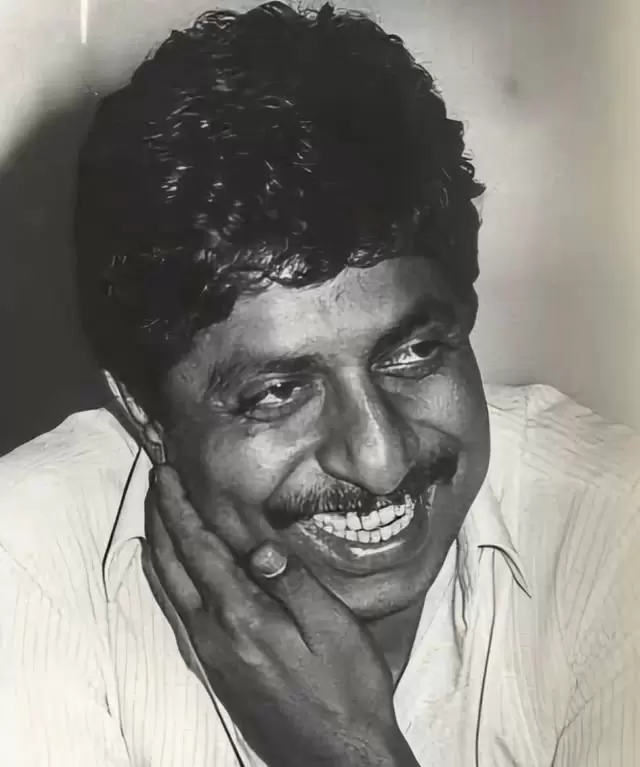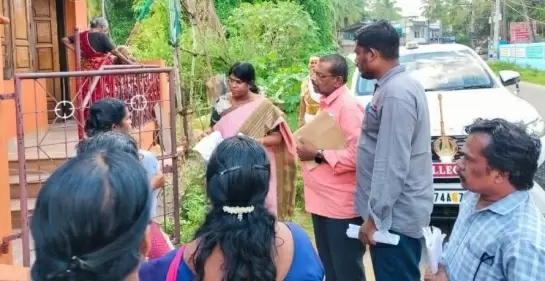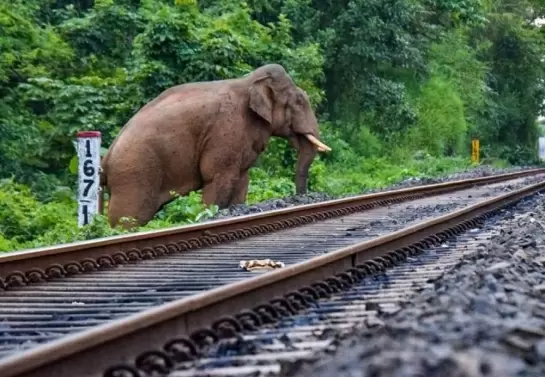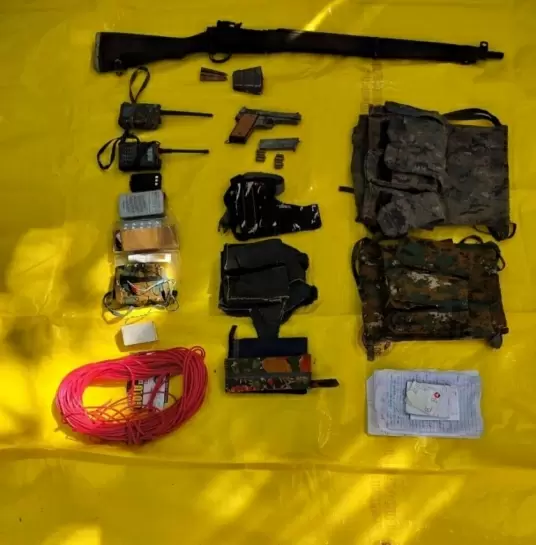‘Why this double standard?’ people of Tamil Nadu ask the PM

06-September-2013
Vol 4 | Issue 36
The UPA government’s response to a writ petition filed in the Supreme Court by Tamil Nadu Chief Minister Jayalalithaa seeking retrieval of Katchatheevu India ceded to Sri Lanka by two agreements in 1974 and 1976 is neither in the interest of the nation nor that of the fishermen community in Tamil Nadu.
All political parties in the State, including the Congress, are critical of the Centre’s stand that Katchatheevu was not ceded, and that it only conceded Sri Lanka’s claim to the ‘disputed’ islet.
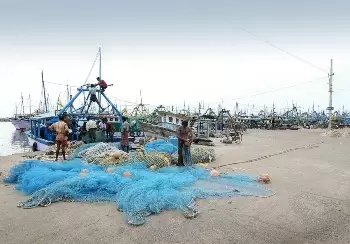 |
|
The Indian government has let down Tamil Nadu fishermen on Katchatheevu issue (Photos: Senthil Kumaran)
|
While the Lok Sabha refused to allow a discussion in response to a letter written to the Speaker by the ministry of external affairs, the Rajya Sabha disregarded a similar request and allowed a discussion on the subject.
Cutting across party loyalties, members belonging to the AIADMK, DMK, CPI, CPI (M), and the BJP disputed the government’s claim.
Union shipping minister GK Vasan, who was out of New Delhi on the day of the discussion, echoed the sentiments of the House. He said in Chennai there could be no second thoughts on retrieving Katchatheevu.
The Centre’s affidavit said, “No territory belonging to India was ceded nor sovereignty relinquished since the area in question was in dispute and had never been demarcated. Therefore, the contention of Jayalalithaa that Kachchativu was ceded to Sri Lanka was not correct and contrary to official records.”
None of the old maps of Sri Lanka include Katchatheevu as part of Sri Lanka. Its claim over the islet was first made in the 1920s. A meeting of officials of Madras Presidency and Ceylon, as Sri Lanka was then called, was held in Colombo on 24 October, 1921, to delimit the Palk Strait and the Gulf of Mannar.
B Horsburg, leader of the Ceylon delegation, sought to follow the median line so as to include Katchatheevu and three miles to the west. The Secretary of State for India rejected Ceylon’s claim as the Zamindari rights of the Raja of Ramnad extended to Katchatheevu.
BP Peiris, former Cabinet secretary of Sri Lanka, said in a Press statement in May 1966, “I remember coming across the problem when I was an assistant legal draftsman. I had to deal with a file for the purpose of verifying some of the boundaries of the northern district of Jaffna.
“In the process of revising the draft proclamation, I had to trace the history of the boundary back over many years. I remember coming across a proclamation issued, probably in the time of Queen Victoria, in which Kachchativu is excluded from the northern district as it belonged to the Raja of Ramnad.”
Till the 1974 secession, Katchatheevu did not figure in any parliamentary constituencies of Sri Lanka. In the 1977 election, it was tagged on to the Kayats constituency of Jaffna district for the first time.
The Ramanathapuram Principality comprising 69 coastal villages and 11 islets, including Katchatheevu in the Palk Strait, was established by the Nayak dynasty of Madurai in 1605.
A copper plaque of Ramnad Raja, Koothan Sethupathy, ruler of the Principality between1622 and 1635 bears testimony to his ownership of the islet. Accounts and audit books maintained by the Raja show Katchatheevu, though uninhabited, yielded regular revenue.
In 1767, the Dutch entered into an agreement with the Raja for a lease of the islet. The survey of 1802 apportioned Katchatheevu to the Ramnad Zamin. In 1822, the East India Company leased the islet from Sethupathy Raja.
Ceylon’s Governor admitted in a letter in 1845 that Katchatheevu belonged to Sethupathy. In 1905, Seenikuppan Padayachi from Ramnad built a church in the barren islet, called St. Antony’s, for fishermen to take rest and dry their nets or seek shelter during times of cyclones.
Antony is the patron saint of fishermen. The islet comes alive during the week-long St. Antony’s feast every year.
In 1913, a lease agreement was signed by the Raja of Ramnad and the Secretary of State for India in Council to “search for, collect, take and carry away all or any chank shells from the chank beds lying within the limits of Kachchativu” for 15 years.
This lease was subsequently extended up to 1936. All this shows that the British, who ruled both India and Ceylon, recognised Katchatheevu as part of India.
After independence, Ramnad became part of Ramanathapuram district. There is sufficient material to indicate that at no time Sri Lanka exercised sovereign rights over Katchatheevu before its secession in 1974.
Indira Gandhi and her then counterpart in Sri Lanka, Sirimavo Bandaranaike, were staunch supporters of the Soviet Union. While it did not affect Gandhi much, Bandaranaike’s popularity had touched the nadir.
Gandhi considered it essential to assist Colombo in stabilising and consolidating its regime. The Katchatheevu secession was expected to go a long way in enhancing the image of Bandaranaike and the credibility of her government.
Former Attorney-General Setalvad advised Gandhi that transfer of Katchatheevu would involve an amendment to the Constitution. Those were the days ‘committed’ judiciary and bureaucracy was in vogue.
Knowing Gandhi’s mind, then Attorney-General Niren De gave a written submission that “on balance, the sovereignty over Kachchativu was and is with Sri Lanka.”
Based on the command performance of De, Indira Gandhi and Sirimavo Bandaranaike signed an agreement in New Delhi on 26 June, 1974, ceding Katchatheevu to Sri Lanka.
The delimitation of the Palk Strait was based on a secret understanding and not on the equi-distance principle.
Sardar Swaran Singh, then external affairs minister, told the Lok Sabha, “I wish to remind the honourable members that in concluding this agreement, the rights of fishing, pilgrimage and navigation, which both sides enjoyed in the past, have been fully safeguarded for the future.”
In the euphoria, none of the mandarins in Delhi bothered to scrutinise the small print of the accord. WT Jayasinghe, who led the Sri Lankan team of officials accompanying Bandaranaike, ensured the wording of Article 5 which said “Indian fishermen and pilgrims will enjoy access to Kachchativu as hitherto, and will not be required by Sri Lanka to obtain travel documents or visas.”
Katchatheevu is not a picnic spot that fishermen flock to; it is for fishing. The right of fishing Swaran Singh waxed eloquently in Parliament was missing.
Describing his counterparts in Colombo, Thomas Abraham, a former Indian High Commissioner in Sri Lanka, in his foreword to a book on Katchatheevu and Problems of Indian Fishermen in the Palk Bay Region by Professor V Suryanarayan, wrote: “Skilful and tenacious, they could unerringly spot the weakness in an argument or fact, the loss of nerve or the lack of interest on the other side. It would be hard to beat them in their grasp of intricacies of problems and the clear goals they had.”
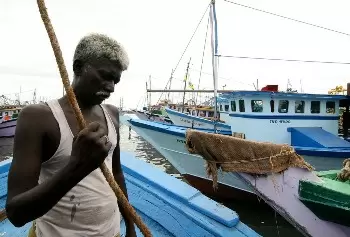 |
|
Questions are being asked why the Indian government defends the interests of Kerala fishermen, but fails to protect the rights of Tamil Nadu fishermen
|
On 23 March, 1976, when Emergency was in full swing in the country, another agreement on Katchatheevu between the two countries was signed, Kewal Singh for India, and Jayasinghe for Sri Lanka.
Paragraph 1 of the exchange of letter reads: “The fishing vessels and fishermen of India shall not engage in fishing in the historic waters, the territorial sea and the exclusive economic zone of Sri Lanka” and vice versa.
YB Chavan, external affairs minister, informed Parliament that both countries have agreed that “fishing vessels and fishermen of one country shall not engage in fishing in the waters of the other.”
The annual report of external affairs ministry for 1974-1975 says, “The agreement with Sri Lanka on the division of the historic waters in the Palk Bay, which has also settled amicably (sic) the Kachchativu issue, is an indication of India’s earnestness in evolving a policy of friendship and mutual co-operation with her neighbours.”
Atal Bihari Vajpayee, leader of the Jan Sangh, retorted, “This is not an agreement, this is surrender.” He asked his party colleague in Tamil Nadu, Jana Krishnamurthy, who subsequently became the BJP president, to challenge the secession in the Madras High Court.
He promptly filed a petition which was admitted by Justice Ismail. During hearing, the judge asked the petitioner to produce documentary evidence to establish the ceded territory belonged to Tamil Nadu.
All the official documents connected with Katchatheevu had been spirited away from Fort St. George in Chennai to New Delhi by the Indira Gandhi government. The appeal was dismissed for failure to produce documentary evidence.
Hundreds of Tamil Nadu fishermen had been shot dead and thousands taken prisoners by the Sri Lankan Navy in the last two decades even as the Indian Navy and Coast Guard remained silent spectators.
When two Kerala fishermen were shot dead by an Italian ship last year, New Delhi moved heaven and earth to bring the culprits to book. Why this double standard? The people of Tamil Nadu are asking Manmohan Singh.
Sam Rajappa is Consulting Editor of The Weekend Leader











